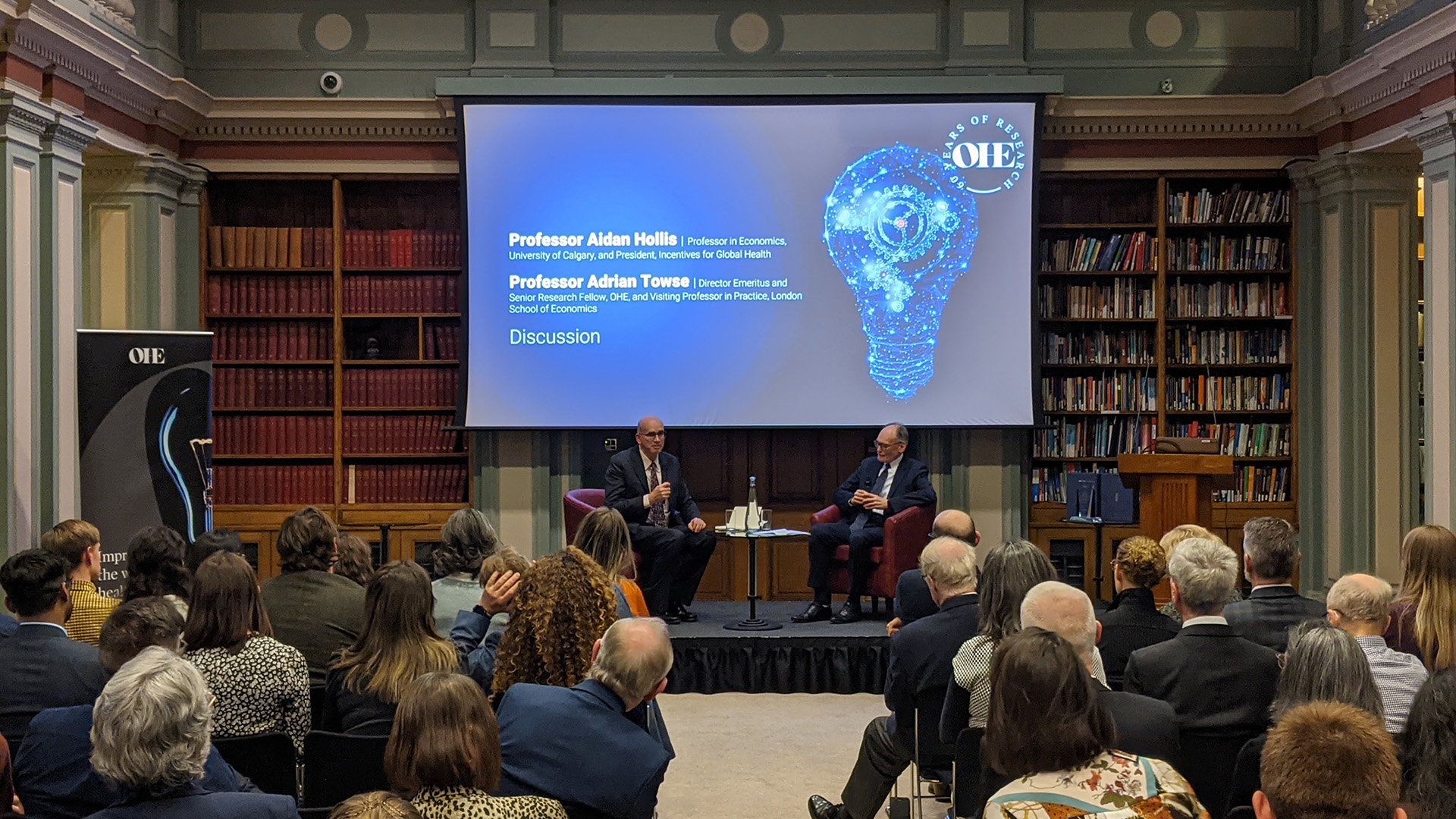What would be the price for an orphan drug that generate rates of return no greater/smaller than the industry average? Is it reasonable?
The high cost of drugs for rare diseases (‘orphan drugs’) has generated considerable debate. While there is debate in the economic literature over whether a premium should be paid for ‘rarity’, these drugs are reimbursed with high prices in many countries. The question then arises as to what should be a reasonable price for an orphan drug?
The
research by OHE authors
Mikel Berdud and
Adrian Towse, along with Professor
Mike Drummond from University of York, addresses that question, based on the proposition that, although society may be willing to sacrifice some health gain overall to make treatments for orphan diseases available, it would not accept a situation whereby manufacturers of these drugs make higher profits than those manufacturers of drugs for non-orphan conditions. We propose a way to
adjust the established cost-effectiveness thresholds (CETs) by several factors, including, the size of patient populations and the costs of research and development (R&D).
Once adjusted, CETs sustain prices that generate rates of return from investments in developing orphan drugs no greater than the industry average.
The research paper published today at OHE website firstly formally develops a general algebraic expression for the adjustment of CETs based on authors’ proposed concept of reasonable price. Then, such general expression is applied, using actual data, to adjust a CET by the two main factors playing a role: (i) the cost of R&D for orphan drugs as compared to non-orphans and, (ii) patient population sizes targeted by orphans and non-orphans. A sample including all novel drug approvals of the FDA between 2011-2015 (N=182) is split into those receiving orphan drug designation (n=71) and the remainder (n=111). Then numbers of patients involved in clinical trials for those novel drugs approvals issued in 2015 are collected from ClinicalTrials.gov. Data to estimate differences in revenues are collected from all appraisals conducted by NICE (England) and SMC (Scotland) regarding novel drugs approvals in our sample to collect data on patient population sizes. Although in the algebraic formulation, the authors consider a number other factors, also playing a role in the adjustment, they use the two main factors listed above for reasons of data availability. Assumptions are applied and explained for all remainder factors.
Research shows that, on average, the estimated research and development (R&D) cost of an orphan drug is around the 27% of the cost of a non-orphan. However, potential market revenue is also lower for orphan drugs compared to non-orphans, as the average non-orphan patient populations were around 80 and 100 patients per 50,000 people for SMC and NICE appraised drugs respectively, which are higher than the cut-off population size (25 patients per 50,000 people) for orphan designation in the EMA’s definition of rare diseases. Using the NICE incremental cost-effectiveness threshold (£20K per QALY) as an illustrative anchor and adjusting by R&D costs and expected market revenue, in the base case scenario the adjusted CET for orphan drugs is estimated to be £39.3K per QALY at the orphan population cut-off and £78.5K per QALY at the orphan population mid-point. For ultra-orphan drugs (with a patient population size of 1 in 50,000 or lower) the adjusted CET resulted in £938.4K.
Based on the properties of the general formula and the results of the illustrative example, the research by Berdud, M., Drummond, M. and Towse, A. (2018), establishes that, to secure a price for orphan drugs that enables the manufacturer to achieve a rate of return equivalent to that from non-orphan drugs, the cost-effectiveness threshold for orphans and ultra-orphans would need to be higher. The threshold would also need to increase as the targeted patient population size decreases.
The research released today at the OHE website thus, proposes one method for establishing the reasonable price for an orphan drug although as authors recognise, further research is required to improve the estimates and assumptions of key parameters, including the relative operational costs (i.e. manufacture, distribution and commercialisation) of orphan and non-orphan drugs; the cumulative patient populations, the average health gains of orphans and non-orphans, and the degree of in-class competition in orphan and non-orphan markets.
It is important to note that the report does not indicate what society should be prepared to pay for an orphan drug, since this involves important societal judgments about whether some population health in total should be forgone in order to provide funding for treatments for rare conditions and, if so, how much. Rather, the authors’ approach is one way of determining the maximum allowable price society should be willing to pay, based on allowing a reasonable rate of return.
Download the full report
here.
Related Research
Zamora, B., Garau, M., Maignen, F., O’Neill, P., & Mestre-Ferrandiz, J. (2017). Access to Orphan Medicinal Products (OMPs) in the United Kingdom and other European Countries. OHE Consulting Report. OHE Consulting Ltd. Available at: https://www.ohe.org/publications/comparing-access-orphan-medicinal-products-omps-united-kingdom-and-other-european [last accessed: 16 July, 2018]
Towse, A. and Garau, M. (2018). Appraising Ultra-Orphan Drugs: Is Cost-Per QALY Apprpriate? A Review of the Evidence. OHE Consulting Report. OHE Consulting Ltd.Available at: https://www.ohe.org/publications/appraising-ultra-orphan-drugs-cost-qaly-appropriate-review-evidence [last accessed: 16 July, 2018]
Drummond MF and Towse A. (2014). Orphan drugs policies: a suitable case for treatment. The European Journal of Health Economics, 15(4), 335-340.
Drummond MF, Wilson DA, Kanavos P, Ubel P, Rovira J. 2007. Assessing the economic challenges posed by orphan drugs. International Journal of Technology Assessment in Health Care; 23:36-42.
Paulden, M., Stafinski, T., Menon, D., & McCabe, C. (2015). Value-based reimbursement decisions for orphan drugs: a scoping review and decision framework. Pharmacoeconomics, 33(3), 255-269.
Meekings, K. N., Williams, C. S., & Arrowsmith, J. E. (2012). Orphan drug development: an economically viable strategy for biopharma R&D. Drug discovery today, 17(13), 660-664.



